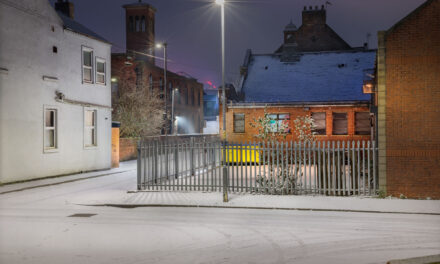A good book can take you out of yourself, abstract you from the over-familiar and humdrum, affording you a temporary respite in other people’s lives and times. A better one, going one step further, takes you into yourself, having been brought up short by the realisation that it is your own dramas that have been played out on the page, your own thoughts expressed with a little more eloquence than you might have been able to express them yourself.
Tom Speake, the protagonist of Sanderson’s Isle, James Clarke’s grand tour of the anticlimactic final year of the 1960s, is hamstrung on a similar dilemma, torn between finding himself in a search for the father he never knew, or outrunning who he is and the collateral damage that comes of his self-absorption. Standing at the periphery of things, observing from the margins with all the bitterness of the disappointed romantic, his closest kin are more ink and paper than flesh and blood; Meursault in Albert Camus’ L’Étranger, or The Outsider Colin Wilson identified himself as being.

James Clarke. Photo courtesy of Serpent’s Tail.
Although Speake has plotted his way down to London from The North, doing his own detective work with only his mother’s unreliable witness statement to aid his investigations, it is chance, or rather mischance, that steers his course, most notably into the unlocked Chelsea back garden of the titular Sanderson who has taken possession of what was once his father’s home. A household name thanks to the travelogue show from which the novel takes its name, Sanderson possesses the kind of charisma that repels with a force equal to his attraction, and Speake and he lock onto one another like continually shifting magnets. Each thinks he has the measure of the other, and each is mistaken. It’s a relationship that has something of the quality of the porous fascination that Chas and Turner develop for one another in Nicolas Roeg and Donald Cammell’s mapping of similar psychic territory in their 1970 film, Performance.
As much as Sanderson, it is his susceptibility to superstition that leads Speake astray, seeing portents while missing all the clues. By seeing significance in the insignificant, he blinds himself to where he’s being led. In spite of disavowing God in the novel’s opening sentence, Speake is almost touchingly prone to belief.
If the London section of the novel has all the humid claustrophobia of the city in the oppressive heat of summer, heavy with menace and sex, then the Lakeland that Speake and Sanderson escape to is fettered by less visible borders, all the more threatening for their blindness to them.
To paraphrase Withnail & I, it is less the case that Speake fails at the last to paint the decade black, and more that the decade itself paints him into a corner, leaving him at the last with nowhere to run to, nowhere to hide. If some of the plot’s strands are left to hang unresolved, there are more than enough remaining to ensure he is firmly ensnared. Yet even caught in the centre of a constricting circle of blue lights, he divines a future, reading some sort of promise in the state of the nation whose coastline constrains him.
Looking back at him from the vantage point of that future, it’s hard not to feel the falsity of such promise, while recognising the saving necessity of continuing to see good omens even in the worst of times. Of course, it’s not Sanderson’s Isle that Clarke has described in his novelistic gazetteer, and certainly not Speake’s. Riven by division and suspicion beneath the thinnest veneer of broadcast consensus, prey to tribal and superstitious thinking, it’s nothing if not our own.
 Sanderson’s Isle can be pre-ordered here.
Sanderson’s Isle can be pre-ordered here.








